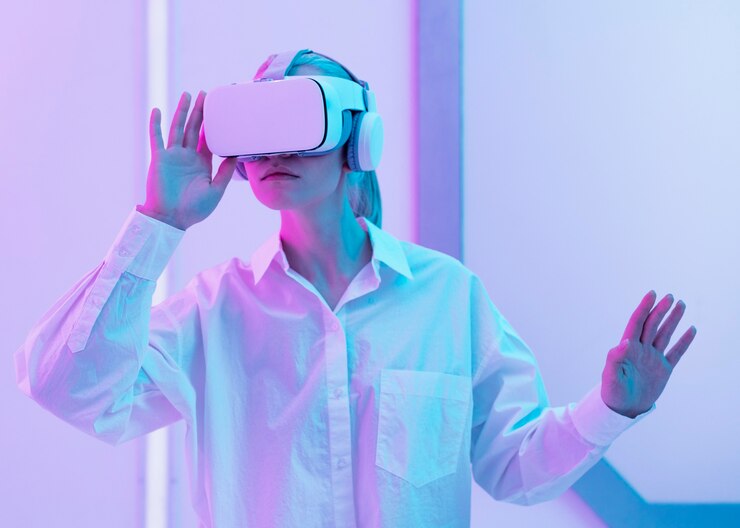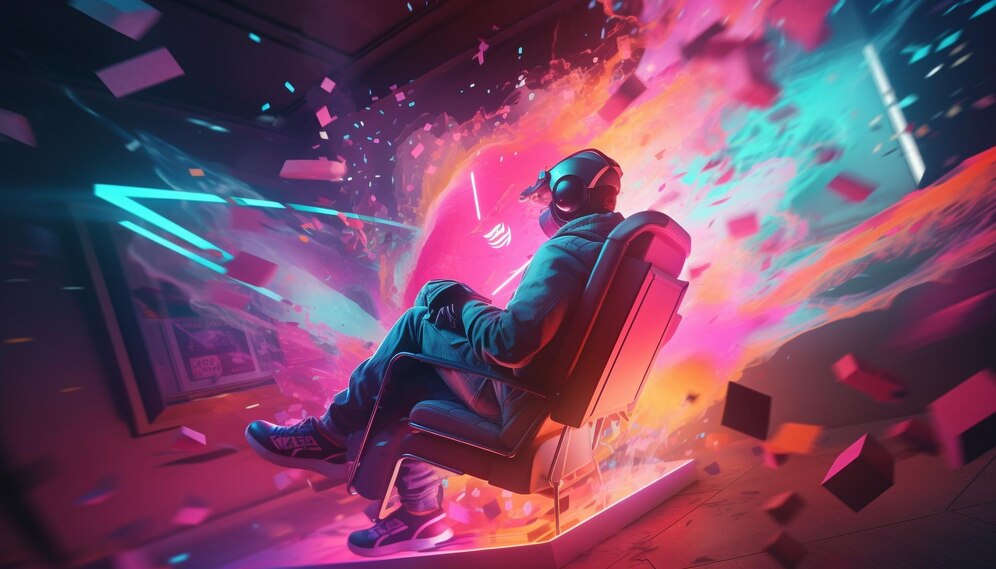Augmented Reality Game Development vs. Virtual Reality Game: Which Makes More Money in 2025?
The gaming industry will change its interaction methods through immersive technologies such as Augmented Reality and Virtual Reality when 2025. From Pokémon Go-style adventures to fully immersive VR worlds like Half-Life: Alyx, both AR and VR offer unique gaming experiences. Developers, alongside investors, are focused on a major revenue question because mainstream technology adoption reveals a business revenue preference between AR and VR gaming. Research involving market trends and system accessibility combined with user experience analysis and cost of development and monetization strategies, will help us determine an answer. The basic principles behind AR and Virtual Reality development in the gaming industry must be clarified first The definition of differences between AR and VR development methods must come first before introducing financial performance comparisons. Numerous digital elements, including virtual characters and objects, together with virtual environments, exist in real-world scenes through smartphones and tablets and AR glasses in augmented reality. During Pokémon Go gameplay, users encounter virtual creatures that appear in their actual surroundings. Users adopt Virtual Reality (VR) through platforms Meta Quest and HTC Vive, and PlayStation VR to enter complete virtual worlds that eliminate the connection between the real world and the virtual simulation. Virtual reality systems provide users with a private and high-resolution experience through which players can execute complete three-dimensional commands. The hardware components and design solutions, and target markets between each system diverge strongly, thus influencing the production of revenue. Accessibility and Market Reach The accessibility factor favours Augmented Reality applications overwhelmingly. Mobile devices running both ARCore and ARKit update systems currently exist on 2025 smartphones. AR gaming reaches billions of users because it operates on existing smartphone technology platforms. The utilization of VR requires the use of special equipment termed a headset. Virtual Reality headsets became more accessible for users, yet the total number of VR gamers worldwide stands at hundreds of millions under a billion. Although it is expanding at a steady pace, the smaller user base reduces current revenue opportunities. The widespread adoption of AR provides greater reach than VR, thus enabling wider profitable opportunities. The Role of Technology Ecosystems in AR and VR Growth The environment of surrounding technologies acts as a significant influencer on the financial prospects of AR and VR gaming ventures. AR game developers benefit from the ubiquitous presence of smartphones as well as their continual renovations in the market. The investment of Apple and Google in AR development tools gives creation studios access to large libraries and motion tracking systems, and AI-detectable object identification, which expands virtual play environments. The VR industry receives enhancements from technological developments that include haptic glove technology and motion sensor devices, and wireless headsets. Meta Quest 3 and Apple Vision Pro show how the combination of features between AR and VR brings blended gaming environments to reality. Through their integration, premium AR/VR hybrid games will become possible, which will advance gaming economics while delivering the most desirable aspects of large-scale and deep gameplay. Australia’s Role in Shaping AR and VR Gaming Economies Australia primarily uses the cities of Melbourne and Sydney for developing immersive technology in the region. Australian startups and universities, and game studios collaborate under government support to conduct R&D projects for AR/VR. The rising demand for AR/VR entertainment requires additional developers, so educational institutions train individuals with development skills in both Unity and Unreal Engine. Local investments in gaming technologies expand as the developing ecosystem aligns with global competition opportunities for Australian-made AR and VR games. Through government-sponsored innovation labs, together with locally run AR/VR studios with international presence, Australia is influencing the future business landscape of immersive gaming. Development Cost and Time The development costs for AR games stay lower while the overall development time stays short, especially when studios focus on mobile platforms. Game developers should work with standard game engines like Unity or Unreal to develop basic game mechanics that depend on GPS localization, together with camera feeds and light sensors. The development of virtual reality games demands enormous amounts of time as well as specialized resources and experts. The development of enhanced virtual reality needs heavy investment in complex 3D modeling, as well as a motion tracking setup and optimized performance. The manufacturing period takes longer and costs a higher amount. Startups and indie studios usually choose AR over VR because its entrance requirements remain more affordable. The development costs of AR are lower, which means businesses face less financial risk when pursuing profitability. User Engagement and Immersion While AR offers convenience and casual fun, VR excels in immersive engagement. Virtual reality technology presents beating games along with The Walking Dead: Saints & Sinners and Half-Life: Alyx, which allow users to experience powerful, emotionally charged gameplay that pulls them back for repeated play sessions. Users become more committed to campaigns that enable extended playtimes and greater player retention, thus resulting in sustained earnings from both DLC and in-game purchases and subscriptions. Real-world exploration, together with events and community features, acts as a successful engagement factor in Pokémon Go and the games developed by Niantic. The conclusion shows that VR provides deeper immersion to players than AR does, though AR maintains its strong user engagement through real-world activities and freedom of movement. Monetization Models The various monetization models within virtual reality, together with the augmented reality gaming sector, depend on system criteria and player conduct. AR Game Monetization: The most popular method within mobile AR games involves giving games away for free while adding features that players can buy through in-app payments. In this game, players can purchase play enhancements from weapon skins to additional features and game benefits. Organizations can generate scalable revenue through location-based advertising as well as sponsored content in AR games. AR games profit significantly through special events, which create spontaneous revenue peaks. VR Game Monetization: Customers pay for VR content as a single purchase through premium pricing, which ranges between $20 and $60 as an initial payment. The sale of DLCs and Expansions occurs as additional content releases after an









